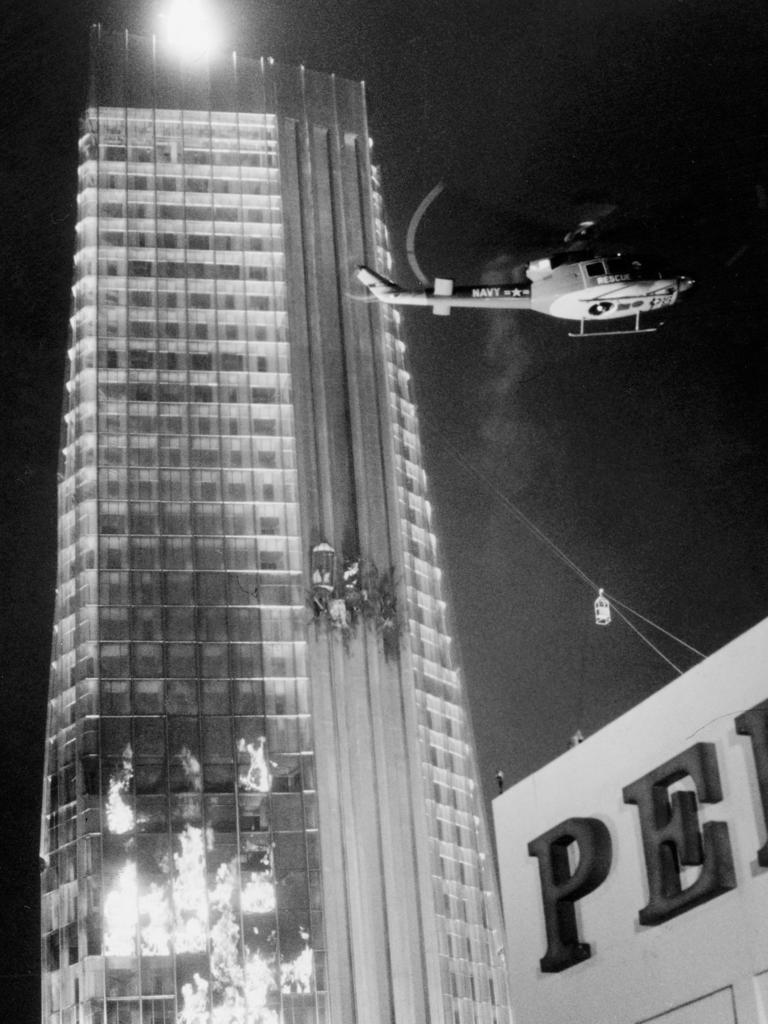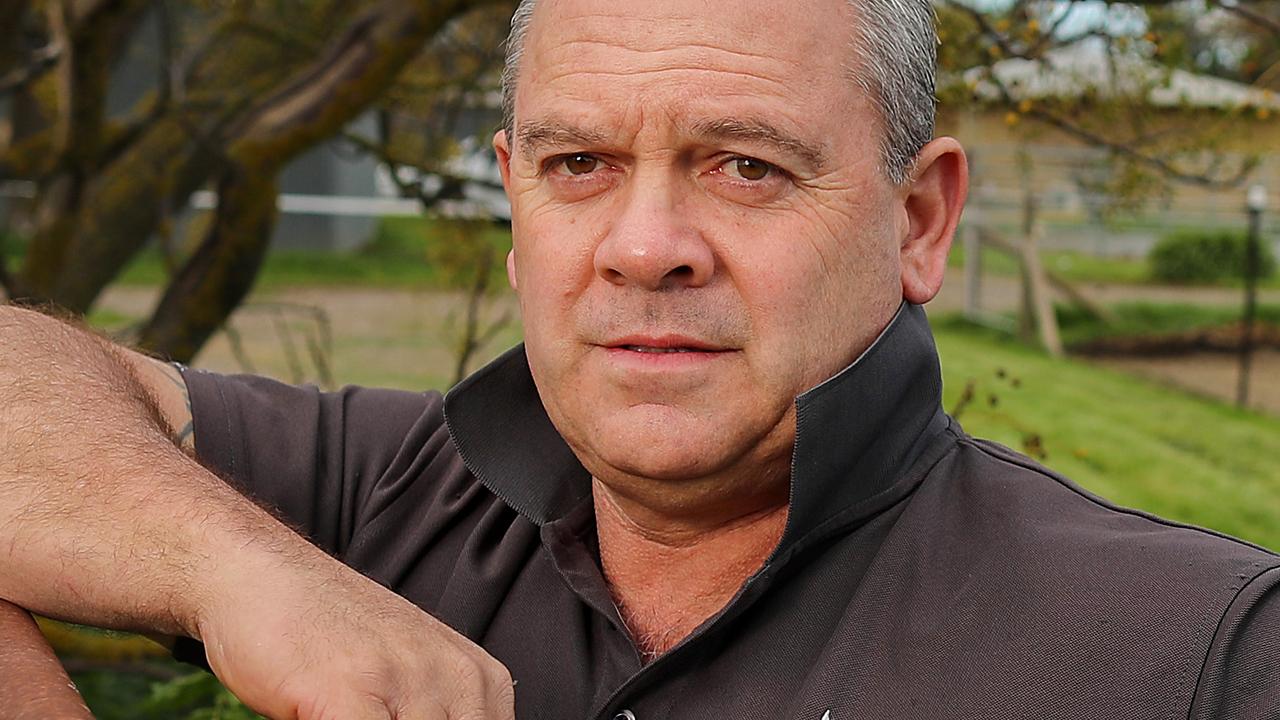Building cladding is a Towering Inferno that’s just waiting to happen
The construction industry has always attracted outlaw bikies and underworld figures who act as muscle in negotiations. Not all criminals kill with bombs and bullets, writes Andrew Rule.
Remember The Towering Inferno? The 1970s Steve McQueen disaster classic is part of the language, burned into our memories the way Jaws is, but for better reasons.
Not many people are taken by sharks but thousands die worldwide in preventable building fires.
Truth is, The Towering Inferno reflects reality. When the Grenfell Tower fire erupted in London two years ago, it was eerily close to the film premise that shortcuts to make profits can cost lives.
Melbourne came close to its own inferno when the Lacrosse building caught fire in the Docklands precinct in 2014. It could have been a tragedy: with stronger wind, weaker water pressure and bad luck instead of good luck, we’d have Ash Wednesday meets Black Saturday in the sky.

The Lacrosse was saved by a coincidence of luck and timing, according to an expert fire engineer with inside knowledge of how the disaster was averted. It happened that the only available fire brigade appliance capable of spraying water into such a tall building was travelling nearby and was sent to the scene within minutes. Its hoses could reach 15 storeys of the 21-storey building — but when parked on a bridge next to the building it gained enough height to reach the top floors.
The second stroke of luck was that when the power was cut, killing the electric pumps feeding the building’s internal sprinklers, the diesel-powered back-up unit pumped three times more water than it is designed to handle. And so a tragedy that would have made damaging headlines across the world was avoided by a whisker.


But relying on luck and fire fighters is no way to beat the risks that come with our long-running building boom. Industry insiders who have studied the findings of the cladding taskforce (headed by former premier Ted Baillieu and former Labor deputy leader John Thwaites) are horrified by how unsafe so many buildings are.
Of more than 2000 buildings the taskforce inspected, almost half pose some risk and 500 are high risk. Some are potential death traps.
Cladding is not the only problem. Other potential time bombs are hidden inside: faulty wiring, glazing and plumbing all have potential to turn high rise buildings into giant coffins being cremated.
So why didn’t the Government simply ban flammable cladding years ago? Surely a stroke of the pen could have fixed it so thousands of Victorians (and Australians generally) weren’t lured into living or working in shiny new fire traps.
Part of the problem is that without laboratory tests, even experts find it hard to pick the difference between deadly cladding that should be banned outright and inferior cladding that is not ideal. The line between the two has been muddied by smarties out to beat the building regulations.

Polyethylene-filled aluminium cladding is lighter, easier to install and has good insulation properties — but that masks the fact that some cheap variations of it are used to save money. The cost difference between one type of cladding and another on a skyscraper is not huge. But it might be enough — say half a million bucks — to persuade a contractor or supplier to substitute one cladding for another without the architects’ or engineers’ knowledge.
The cladding debacle is a multimillion-dollar mess, especially for thousands of buyers who have invested in apartments, only to find they own an unsaleable firetrap that will send them broke to be fixed.
Even when lives are not lost, they can be ruined by the greed of others.
So who are the bad guys?
“There are half a dozen dodgies,” says one source close to the taskforce, referring to those who game the building regulations. A few rogue builders use pet building surveyors and fire engineers whose names keep cropping up.
The whiff of corruption hangs over the relationships between “cowboys” in construction and those we trust to police the regulations.
The industry has always attracted outlaw bikies and underworld figures who act as muscle in negotiations between developers, contractors and unions. This is bribe and standover territory, a taint reaching all the way back to the late Norm Gallagher and the BLF.

Corruption of construction safety standards happens in countries whose citizens are put at risk because crime has infiltrated the system. In Italy, the Mafia long ago calculated there is more profit in construction rackets than in drug running. For decades, they have corrupted the build quality of roads and bridges and buildings, killing and injuring hundreds of people along the way.
When the Morandi highway bridge collapsed in Genoa last August — killing 43 people and injuring hundreds more — it was the 10th bridge collapse in Italy in only five years. Before that were floods in which people died because Mafiosi had cheated on the steel and cement in huge building projects. When floodwater hit, buildings crumbled like sand castles.
This litany of death and destruction is a warning for Australia, a reminder that not all criminals kill with bombs and bullets. Corruption can be more fatal.
It is only dumb luck that Melbourne’s flammable cladding scandal has not yet proved as deadly as the Grenfell Tower disaster in London two years ago, when 72 people died in the deadliest residential fire in Britain since World War II. Grenfell was close to a real-life version of Towering Inferno, the premise of which is that a greedy contractor short changed the owners by installing cheap electrical wiring that sparked a killer fire. Substitute cladding for wiring and you have the Melbourne scenario in 2019.
Architects and engineers who specialise in this area point out that high-rise buildings are not built to the exacting standards as other objects designed to contain large numbers of people — such as aircraft and ships.

A high-rise building, like a ship or airliner, holds people in a tight space from which they cannot easily escape. But regulations for building ships and aircraft are more stringent than for buildings. Engineers familiar with the cladding crisis say regulations for constructing a 30-storey building are essentially similar to those for a suburban house and not any better policed
There’s another side to Australia’s dilemma: we didn’t learn from New Zealand, where enthusiastic early adoption of polyethylene-filled cladding (for its insulation properties) has led to a rash of “sick buildings” that could cost more to fix than the entire Christchurch earthquake damage. The bill is so huge that the New Zealand Government has had to step in, something Canberra might have to do here, to save lives, livelihoods and an economy that relies on a building boom fuelled by one of the highest immigration rates in the world.
One irony of the cladding disaster is that the city office tower that houses Victoria’s Planning Ministry is one of the worst affected — and has had a brush with disaster.
RELATED: CLADDING: VICTORIANS TO FOOT $600M BILL
ROGUE BUILDERS FACE SURPRISE INSPECTIONS
FLAMMABLE CLADDING BANNED ON HIGH-RISES
The story goes that an unknown person flushed an item of underwear down a toilet and that this blocked the plumbing so badly that it flooded and spilt into an electrical circuit, causing a “short” that sparked a fire.
The result? The building had to be evacuated and repairs took months and cost more than $20 million.
A pair of undies could have burned down a skyscraper housing an entire government department. Maybe not quite a Steve McQueen plot but if it’s not a good reason for our leaders to get their knickers in a knot, nothing is.



